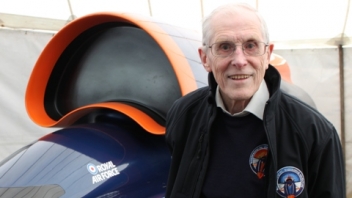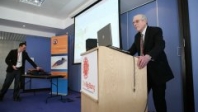
I have been an engineer since January 1950(!) when I commenced an engineering apprenticeship at Handley Page Ltd. One of the aircraft that I worked on was the first prototype of the Victor Bomber. During my apprenticeship I was allowed some time off to study for a degree in aeronautical engineering. I subsequently continued my education at the (then) College of Aeronautics at Cranfield, now known as Cranfield University.
In 1956 I joined the Guided Weapons division of the Bristol Aeroplane Company (before it became part of the British Aircraft Corporation) as an aerodynamicist. During my 11 years at that company I held several positions including, for five years, that of Chief Aerodynamicist. One of the principal projects that I worked on was the Bloodhound surface-to-air anti-aircraft missile. Thus you can see that the name of the Bloodhound SSC record car has a provenance! I also was involved with the Rapier tactical anti-aircraft weapon.
From 1967, for over 20 years I was involved in the design and manufacture of printing machines and associated equipment.
During a period of retirement I worked as a volunteer researcher at the Brooklands Museum in Weybridge. While there I found in the archives, a batch of Vickers Armstrong wind tunnel reports from the 1920’s and 1930’s concerning research conducted on the great pre-WW2 speed record cars such as Golden Arrow, Bluebird and the Railton Special. This started my interest in record breaking. In 1992 I had a chance meeting with Richard Noble. He was already planning to repeat his Thrust 2 successes, but this time he had ambitions to exceed the speed of sound. When he found that I had, in an earlier career, specialised in high speed aerodynamics his powers of persuasion ensured that my retirement was over. We set the supersonic record in October 1997.
I subsequently became the aerodynamicist on the JCB Dieselmax project, which achieved an International Land Speed for Diesel cars of 350mph.



